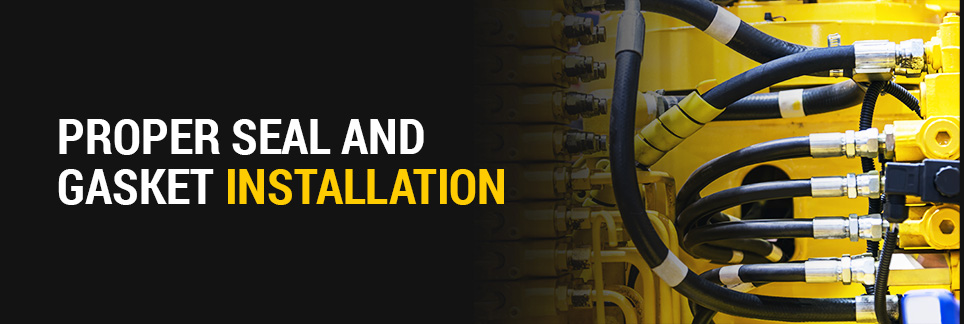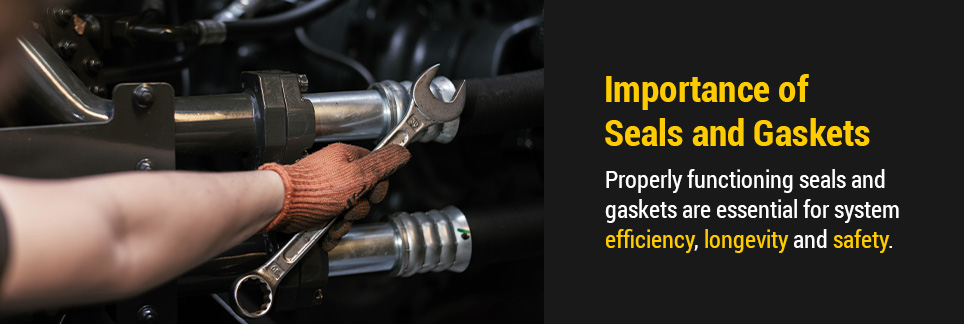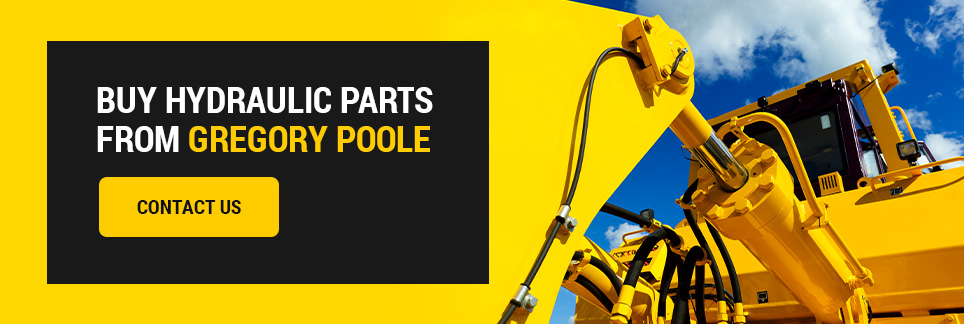
Hydraulic equipment leaks can lead to costly damage and safety risks. Seals and gaskets play an important role in preventing these leaks and promoting the safety and efficiency of your equipment and parts.
Understanding common causes of leaks and how to make simple repairs can help you save time and money. Continue reading to learn how to prevent hydraulic leaks and the importance of heavy equipment seals and gaskets.
There are many instances where reliable hydraulic equipment can start to leak hydraulic fluid. The cause of leaks can vary depending on the cylinder type. However, there are common causes to keep in mind.
A visual inspection should be sufficient to find external leaks, though internal leaks are more difficult to spot and can be the result of wearing, poor design, inaccurate tolerances during manufacturing, or even using the incorrect components. Identifying these root causes is important in implementing effective leak prevention strategies.
Leaks in the pump or motor can cause significant power loss in hydraulic systems, leading to downtime. Visual inspections and proper maintenance are critical to prevent hydraulic fluid from leaking and compromising the system.

Seals and gaskets play critical roles in hydraulic systems, preventing leaks and maintaining system efficiency. Properly functioning seals and gaskets are essential for system efficiency, longevity and safety. These components form barriers that contain hydraulic fluids within the system. They seal off potential leakage points to maintain proper fluid pressure levels and make sure the system works without losing efficiency.
Additionally, seals and gaskets contribute to the reliability and longevity of your system. They can prevent leaks that lead to contamination and component damage, helping extend the life span of heavy equipment and reducing the need for frequent repairs. They are also critical for safety purposes. Preventing leaks can reduce the risk of accidents, such as fluid spills or system malfunctions, which can pose hazards to personnel and the environment.
There are many types of seals and gaskets used in hydraulic systems, including O-rings, piston seals and spiral wound gaskets. Each type serves a specific purpose based on the application’s requirements.
Heavy equipment seals and gaskets are made from durable materials to prevent hydraulic fluid from leaking. To choose the right type of seal or gasket, you’ll need to consider factors like operating conditions, fluid compatibility and pressure levels. The correct seal or gasket will effectively mitigate leaks and ensure optimal performance and longevity of your system.
Correct installation is critical for ensuring the effectiveness of heavy equipment seals and gaskets. It’s important to consult with hydraulics professionals to ensure the proper installation of these components. General steps include:
Before installation, inspect the seals and gaskets for visible damage or defects. Make sure the components are clean and free of debris, rips and tears that could compromise the seal.
Depending on the seal or gasket’s material, apply the right lubricant to help you install the components and reduce friction during operation. You might also soak the seal in hot lubricant to improve its elasticity.
Align the seal or gasket correctly with the compatible surface to ensure a tight seal. Avoid sharp corners that could damage the seal’s surface, as well as misalignment that could lead to leaks and failure.
Use the right tools to install the seal, including alignment tools or torque wrenches, to install the components without damaging them. Be sure to remove dust or any particles from these tools that could impact sealing.
Adhere to the manufacturer’s instructions regarding installation procedures, torque specifications and any specific requirements for the seals and gaskets you’re using.
When installing gaskets, ensure there’s even compression across the surface to prevent hydraulic fluid from leaking. Tighten the fasteners gradually and in a crisscross pattern to distribute even pressure.
After installation, conduct a leak test to verify that the seals and gaskets are functioning correctly. This can involve pressure testing the system or inspecting for any signs of leakage.
Hydraulic components drive many types of heavy equipment, from excavators to material handlers. Routine maintenance is essential to prevent leaks and ensure these machines deliver the power and efficiency needed for your tasks. Understanding the causes of leaks and how to correctly install seals and gaskets is critical to your success.
Gregory Poole recognizes the importance of quality hydraulic repairs and services. Our experts have the knowledge and experience to repair, reseal and reconstruct hydraulic components. We carry and extensive selection of hydraulic parts for all makes and models of heavy equipment. Browse quality hydraulics components or contact us today to learn how we can service your hydraulic needs.
